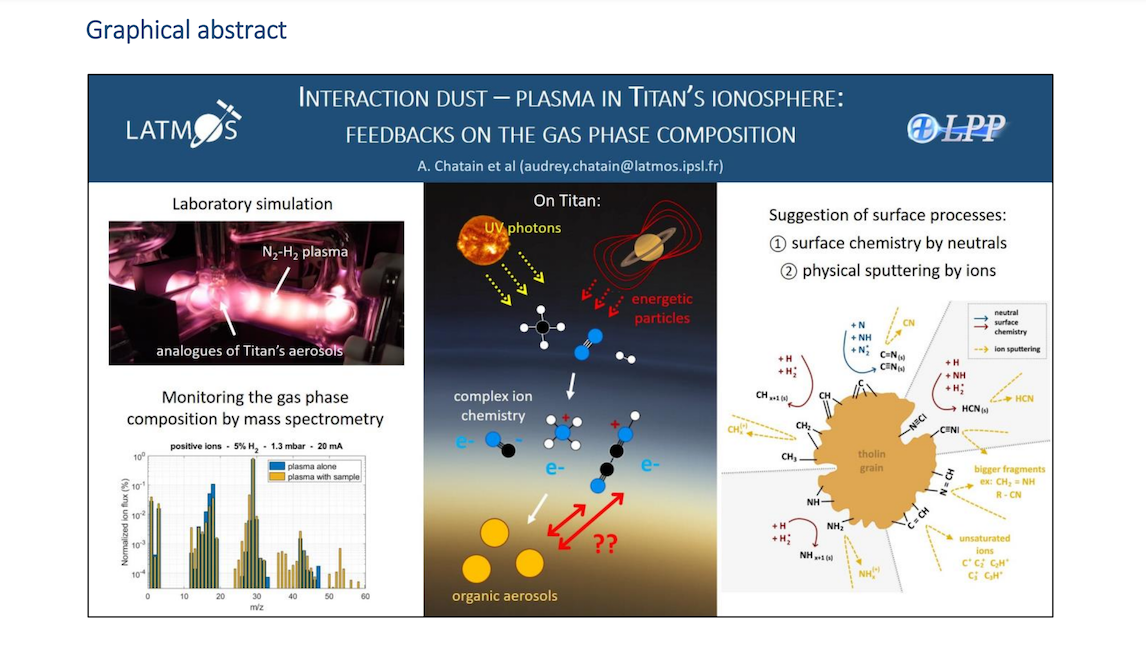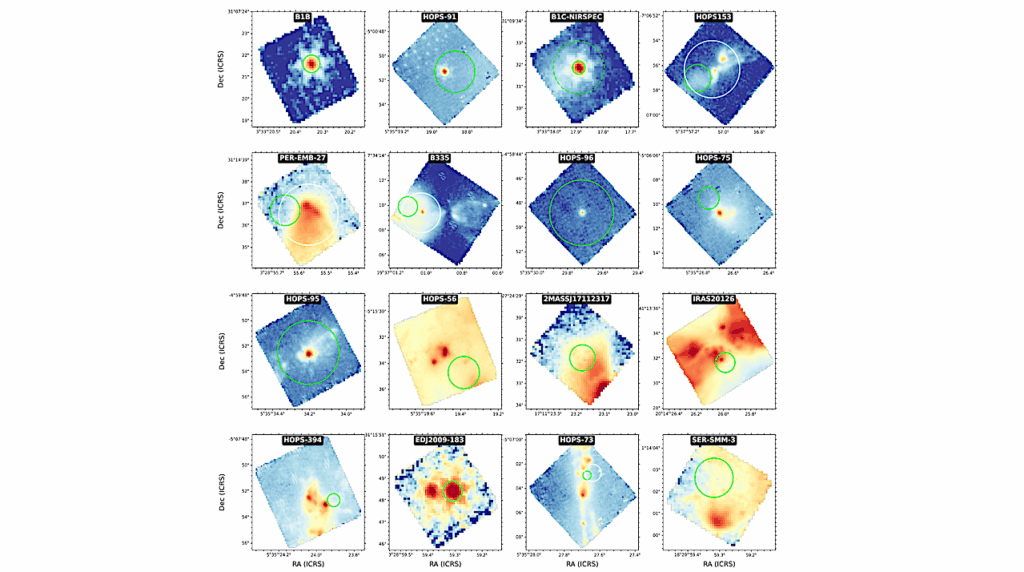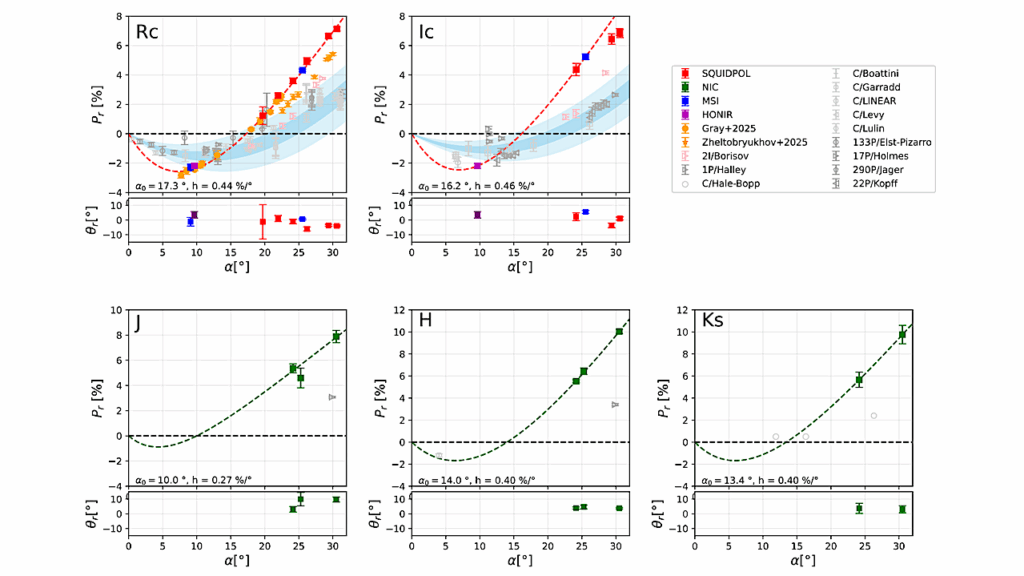Interaction Dust-plasma In Titan’s Ionosphere: Feedbacks On The Gas Phase Composition

Titan’s organic aerosols are formed in the ionosphere, a layer ionized by solar VUV photons and energetic particles from the magnetosphere of Saturn, forming a natural N2-CH4-H2 plasma.
Previous works showed some chemical evolution processes: VUV photons slightly alter the aerosols nitrile bands, hydrogen atoms tend to hydrogenate their surface and carbon-containing species participate to the growth of the aerosols.
This work investigates the effect of the other plasma species, namely the N2-H2 derived ions, radicals and excited states. Industrial plasmas often use N2-H2 discharges to form ammonia-based fertilizers, for metal nitriding, and to erode organic surfaces. Consequently, these are likely to affect Titan’s organic aerosols. We therefore developed the THETIS experiment to study the interactions between analogues of Titan’s aerosols (tholins) and the erosive N2-H2 plasma species found in Titan’s ionosphere.
Following a first paper on the evolution of the solid phase by Scanning Electron Microscopy and IR transmission spectroscopy (Chatain et al., Icarus, 2020), this paper focuses on evolution of the gas phase composition, by neutral and ion mass spectrometry. Newly formed HCN, NH3-CN and C2N2 are extracted from the tholins as well as some other carbon-containing species and their derived ions. On the other hand, the production of ammonia strongly decreases, probably because the H, NH and N radicals are rather used for the production of HCN at the surface of tholins.
Heterogeneous processes are suggested: chemical processes induced by radicals at the surface would modify and weaken the tholin structure, while ion sputtering would desorb small molecules and highly unsaturated ions. The effect of plasma erosion on aerosols in Titan’s ionosphere could therefore lead to the formation of CN bonds in the aerosol structure and the production of HCN or R-CN species in the gas phase.
Audrey Chatain, Nathalie Carrasco, Ludovic Vettier, Olivier Guaitella
Comments: This paper has been accepted in Icarus (February 2023). The current version in arXiv is the submitted version
Subjects: Earth and Planetary Astrophysics (astro-ph.EP); Plasma Physics (physics.plasm-ph); Space Physics (physics.space-ph)
Cite as: arXiv:2303.00062 [astro-ph.EP] (or arXiv:2303.00062v1 [astro-ph.EP] for this version)
Submission history
From: Audrey Chatain Dr
[v1] Tue, 28 Feb 2023 20:05:58 UTC (3,012 KB)
https://arxiv.org/abs/2303.00062
Astrobiology, Astrochemistry








